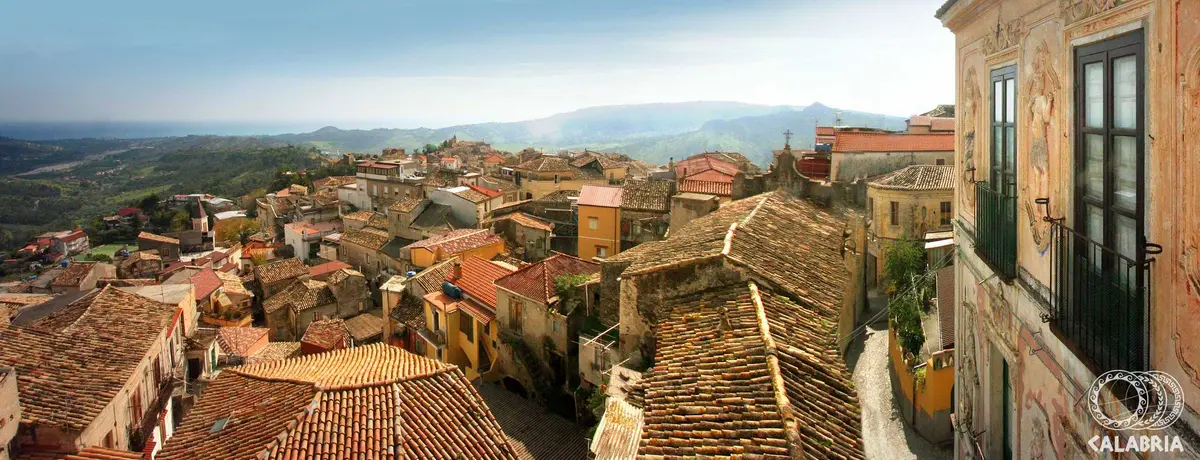Agnana Calabra
Agnana Calabra, the slow centre of a mining village

Town
Agnana Calabra is a small Calabrian municipality in Locride, close to the stupendous Costa dei Gelsomini (Jasmine Coast). The village is part of the Pisl Slow Life project which aims at promoting and developing Slow Life in the Locride area. The sulphurous and chlorinated water springs of Agnana are included in the nature route that crosses the whole area from north to south.
The village was built around the middle of the 14th century near a Basilian monastery at the top of Mount St. Agnana (from whom it takes its name).
Agnana is timeless and the daily pace of life can be slowed without being assailed by anxiety.
Agnana Calabra has mineral water springs and a coal mine which supplied the first train ever to leave Naples, at the time of Ferdinand II. There are still craftsman studios in the little centre, and the tastes and smells of the past in the traditional cuisine waft through the old lanes and alleys.
Slow Life
Agnana is timeless and the daily pace of life can be slowed without being assailed by anxiety and stress, examples of simplicity can be rediscovered and the colours, perfumes, scents, tradition and folklore can be inspirational. It’s a wonderful corner of Calabria, in the Aspromonte National Park, offering authentic, memorable experiences, far from the programmed and frenetic everyday life, which includes many exciting trips into nature, art, history, culture, craftsman, traditional products and spa resources.
The Mines
The great deposits of lignite and anthracite were the base of the Agnana economy, acquiring considerable renown in the Kingdom of the Two Sicilies. They were widely exploited, first by the Bourbons until 1850, and then the local population until the Second World War. The anthracite extracted from the Agnana mines was used for the construction of the Rome-Frascati railway line in 1882. Around 1855, at the height of the mining work, fossil remains of Anthracotherium, a large mammal now extinct, which lived about 30 million years ago, were found in the lignite. The fossils are kept in the Palaeontology Museum of the University of Naples Federico II. The name Anthracotherium means ‘coal beast’ and was attributed to it because the fossil remains of this mammal are often found in the lignite deposits of Asia and Europe dating to 30-20 million years ago. For many years around the turn of the 19th/20th centuries, the lignite and anthracite deposits were the basis for the employment and development of the surrounding peoples. However, the true wealth of Agnana were some springs of mineral water, one sulphurous, two chlorinated and another ferrugineous-sulphurous, in the Junchi area. After careful analyses, the water was defined ‘thermo-mineral’, i.e. suitable for the treatment of various diseases. The ruins of some therapy baths once used can still be seen.
Wine & food
Local products are those mentioned in the Mediterranean Diet recognised as Intangible Cultural Heritage by UNESCO. Agnana cuisine is a journey of discovery of traditional products recalling the area. The local gastronomy produces handmade cheese, both matured and soft, still made following the old customs of Agnana peasants and respecting maturing times appropriate to the lifestyle of the area.
Useful information
What to know about Agnana Calabra
Infopoint Agnana Calabra
Via Roma, 117, Agnana Calabra
No result









